The last February, 25, I could go to the Sorolla´s “House-Museum”, in the Martinez Campos Street of Madrid (Spain).It is the house where Sorolla lived with his wife and children and where he painted:


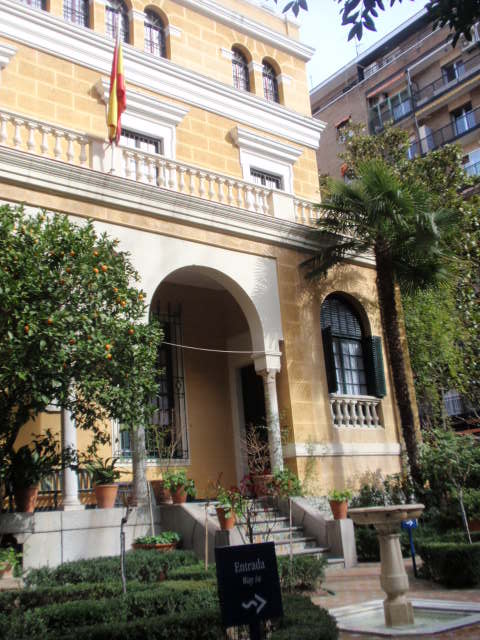
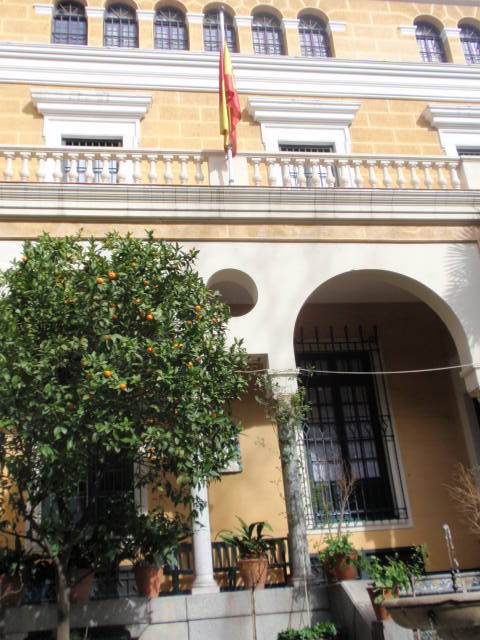
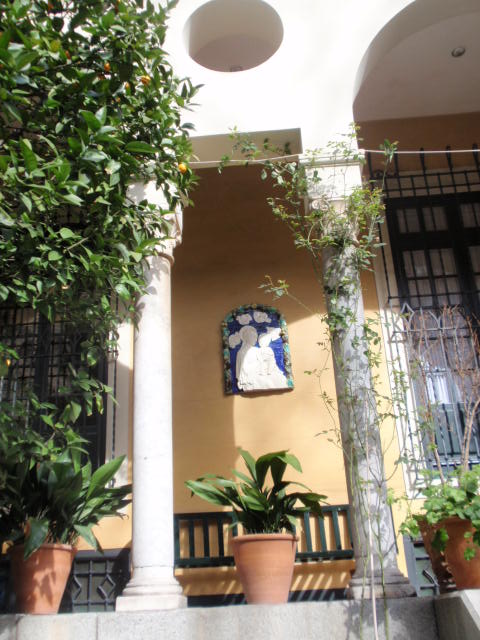
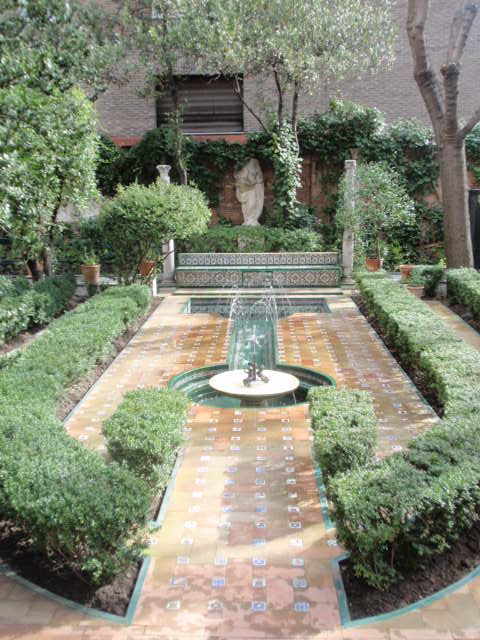

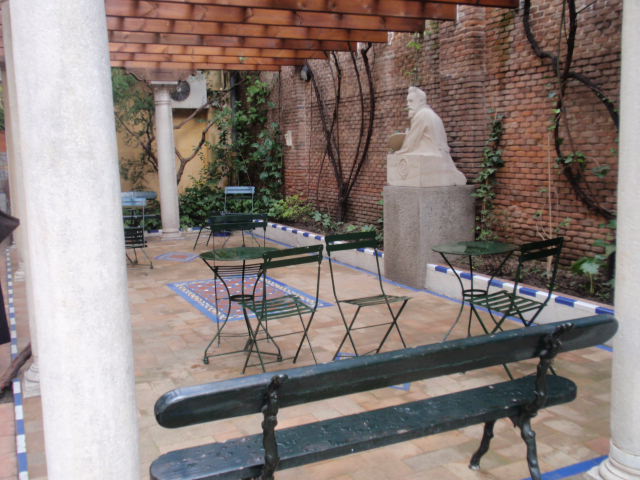
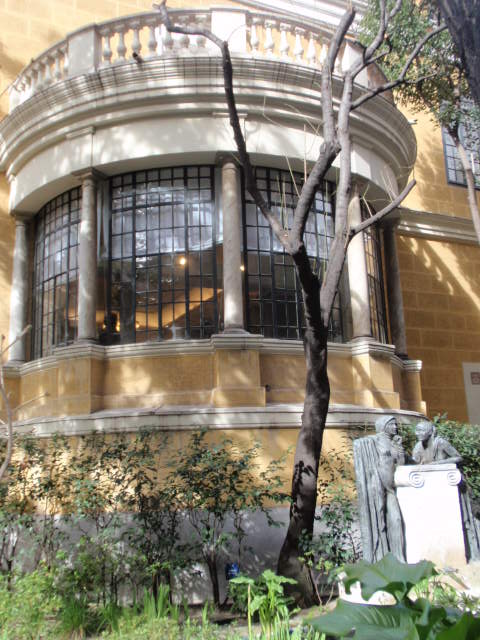
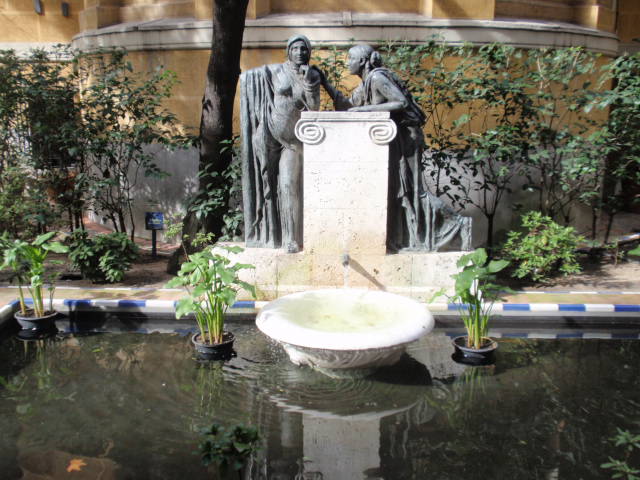
After having crossed the gardens, I went into the house, in order to pay the ticket to see the Museum; I payed 3 Euros.
At the level of the gardens, I could visit a room with ceramic. And I could take this picture of a patio:
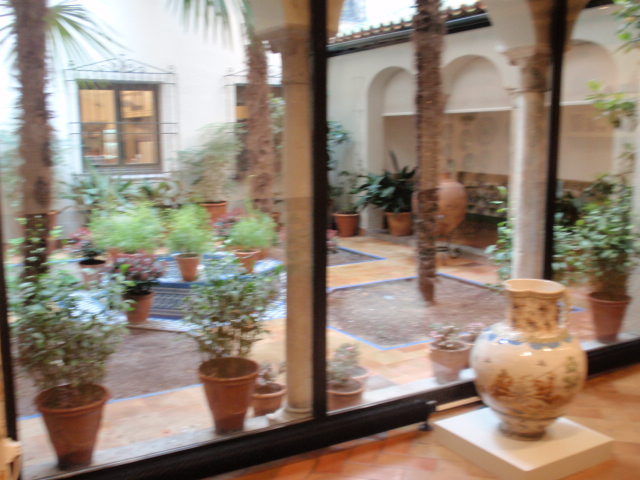
This patio was beside the kitchen of the house. The kitchen had light and ventilation from this patio. A patio wih Andalusian inspiration, which has a fountain, with its trough from Triana (Seville), in the center. Galleries supported by columns and capitals ancient Genovese. The skirting tiles contribute to give the patio its Andalusian character, although they are from Talavera (Toledo), and two ceramic end panels (a hunting scene on one and two saints cooks in another) are from Manises (Valencia).
Two sculptural pieces: the portrait of Clotilde, plaster work by the sculptor José Capuz, and a female nude, a work by Elena Sorolla, framing the view of the patio, which is open in summer.
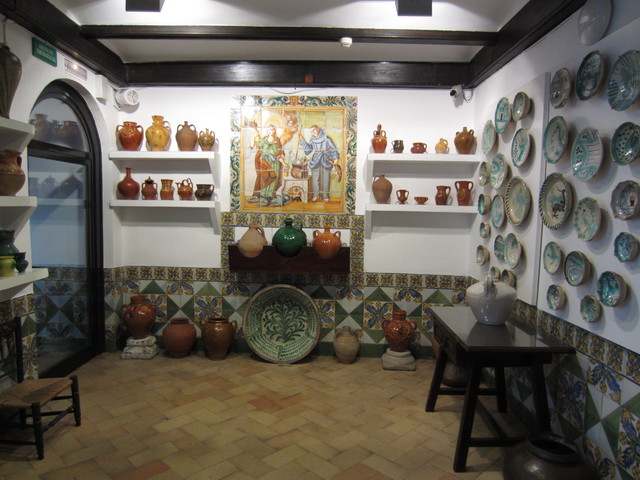
Here, to the right side you can see several pieces of ceramic from Paterna (Velencia).On the center of the table, you can see a pitcher from Pais Vasco (North of Spain).
After that, I went to the first room with painting. And I started to take pictures to share them with you. I warn you that although Sorolla have left us many paintings, I only took pictures of the paintings that I like more. This is Joaquin Sorolla, the Painter:
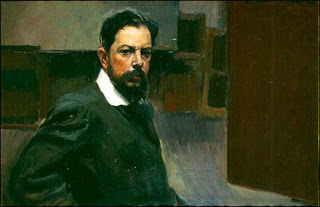
This is the first painting that I liked in the Museum:
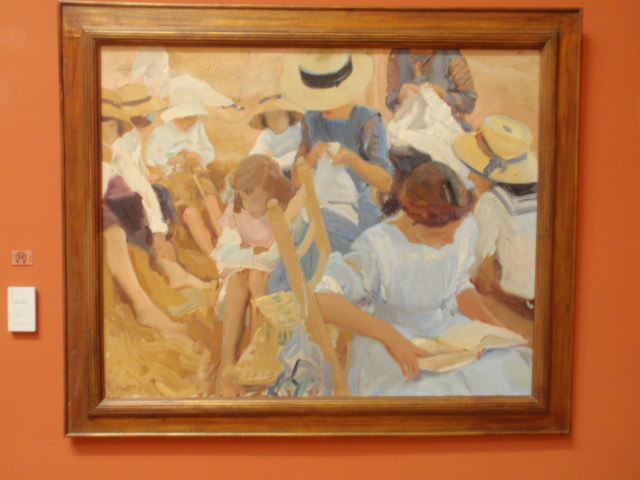
“Sobre la arena.Playa de Zarauz” (1910). Here, you can check that Sorolla loved Photography, since hw worked, as assistant in the studio of his father in law, Antonio Garcia Peris. You can see that Sorolla uses a uses a type of composition that would be difficult to imagine without the habit of seeing photographs. The figures are cut arbitrarily, unaware that they are being photographed-portrayed, which gives the painting an impression of factly. But few Sorolla paintings have this resource.
The result is a surprisingly modern image; therefore, not perceived background, horizontal image, the figures seem to cluster along the plane of the picture itself, giving it a major role; vagueness blurs the faces of the characters and makes them mere COMPOSITION elements of arbitrary shape and color.
Another painting, that I love, which belongs to the Sorolla´s Culmination Stage, is:
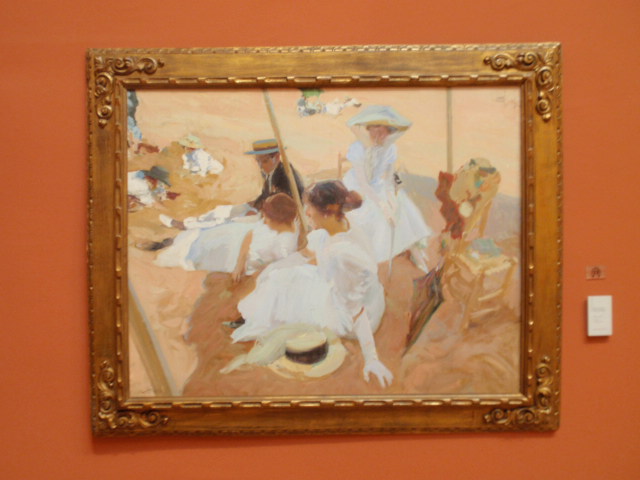
“Bajo el toldo. Playa de Zarauz” (1910). Sorolla and his family part of the "farm tourism" or "residential tourism" that wealthy families could afford. Sorolla and his family used to go to the coast and the painter became the chronicler of "playismo", phenomenon that generalized later (in the 30s). At the time of Sorolla, coastal tourism consisted in taking baths wave being recommended breeze and sea water for its properties therapeutics.To this conception of the beach as a leisure northern areas is preferably adjusted as San Sebastian, Santander and Biarritz, where the climate is more fresh, the beach was compatible with sartorial elegance.
Another painting, that I like is:
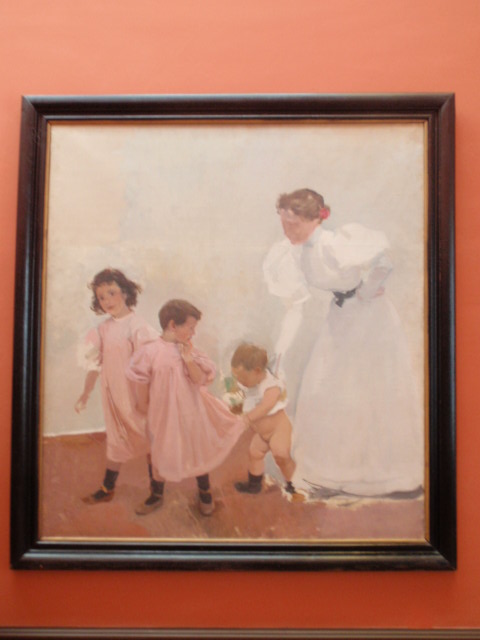
“Mi mujer y mis hijos” (1897-98). Here, you can see to Clotilde (Joaquin´s wife); to the left: their oldest daughter (Maria Clotilde); in the middle: the son Joaquin and, to the right: Elena (the youngest daughter).Here, Sorolla wanted to keep the scene (a funny scene) with his three children, walking in a row; but, when he took the scene, he left the painting unfinished. she runs around half naked, clinging to Joaquin´s babi and subject by her mother. mother.
Mary and Joaquin, with their pink "babis", go ahead and Helen, so refractory with clothes, when she was a child.
Clotilde is barely sketched, faceless, but it attract attention her dress in fashion with voluminous sleeves style "gigot".
After that, I took a picture to the painting:
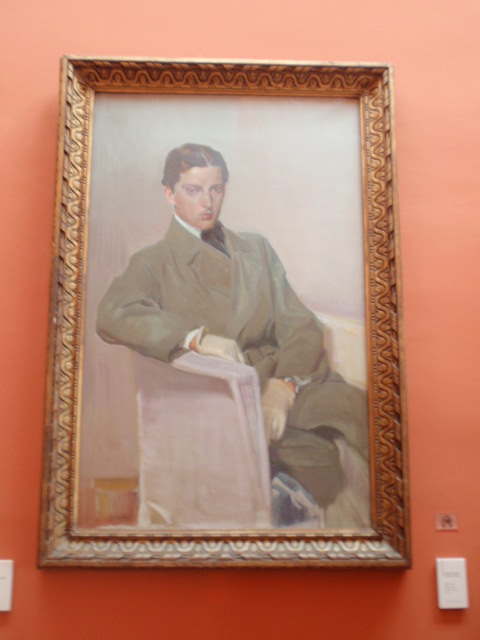
“Joaquin Sorolla y García, sentado” (1917). This is the son, who studied in England and there he learn to be so elegant. He never be married and when his father died, he helped his mother so much.He left all the paintings that he inherited to the Museum.
The next painting that I liked was:
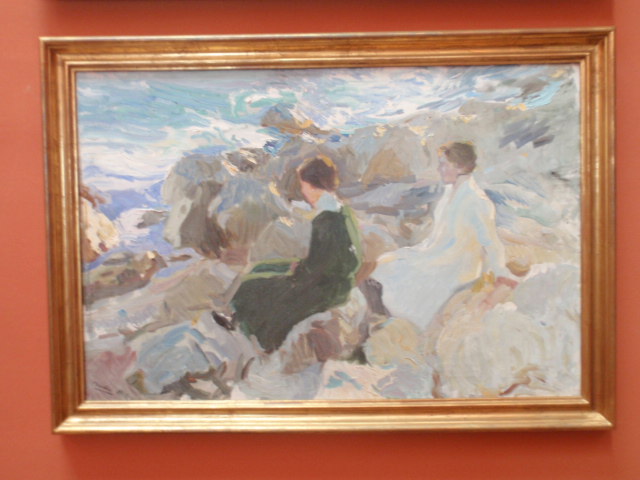
“La Caleta, Malaga” (1910). Sorolla painted to his wife and their daughter, Elena.
Here you have another painting in the beach of Zarauz, but I do not remember the tittle:

This is a corner in one of the rooms of the Museum, where you can see, on the left side a painting titled: “Elena en la playa” and, in the top to the right, you can see the painting: “Despues del baño” (1909) –where you can see two girls--:
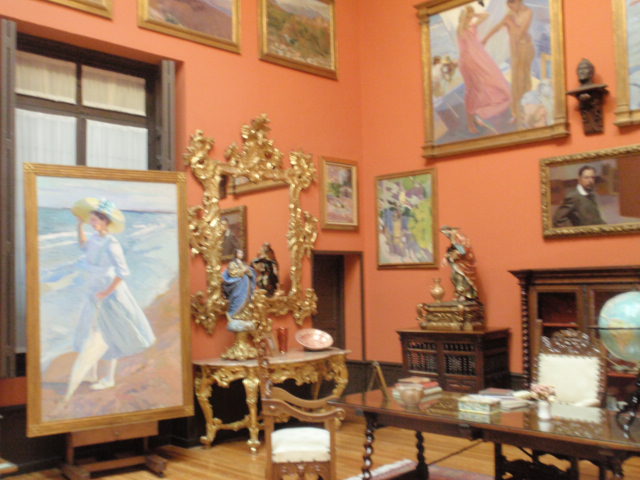
"Despues del baño" (Valencia, 1909). Sorolla felt very comfortable with this topic himself. This type of scene reflects real motives of the Valencia of his time. The custom in Valencia, in the late nineteenth and early twentieth century was that the children of the workers and fishermen bathe nude. After four or five years, the girls began to bathe in robe, while the children still did naked through adolescence. Hence the appearance in his paintings of girls in rose and white coats, changing, as in this, or playing on the shore like so many others.
Here you have the dining room of this house:
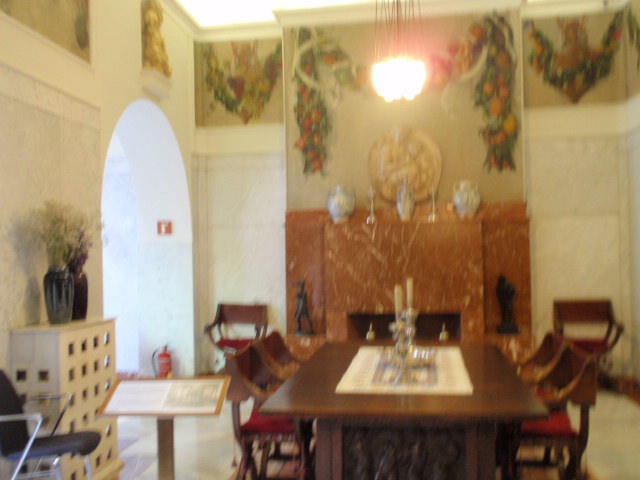
And this is the opposite of the dining room:

When I was going up to the first floor, I could see some paintings, but I do not know their titles:
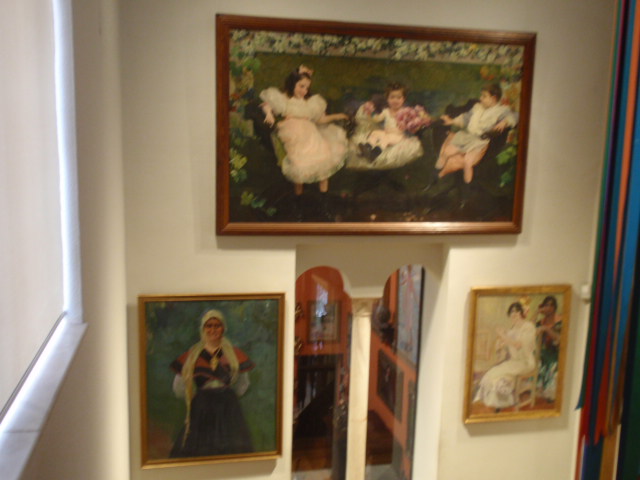
When I was inside the last room, in the first floor, I saw a painting that I liked:
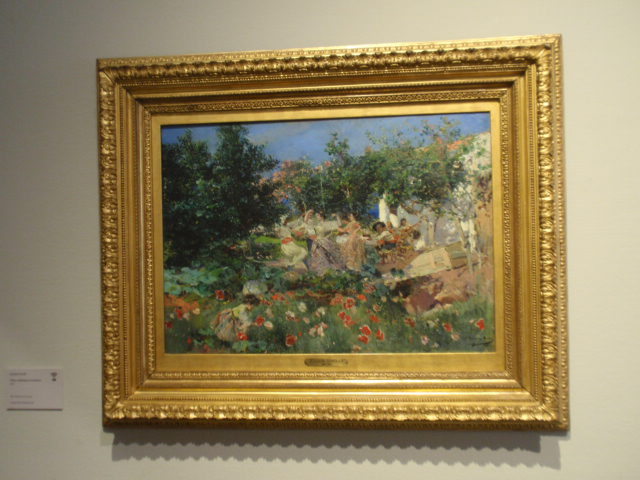
“Fiesta flamenca”
But, although I visited the room, I did not want to make pictures there.
Anyway, if you want to know about this temporary exhibition called "Fiesta and color", please click below:
http://www.hoyesarte.com/evento/2013/12/fiesta-y-color-la-mirada-etnografica-de-sorolla/
I think that the Museum is very nice and I recommend you to visit it.
Till soon, kind regards,
Luis.
Sponsored by Costaluz Lawyers.
Please click down here:
